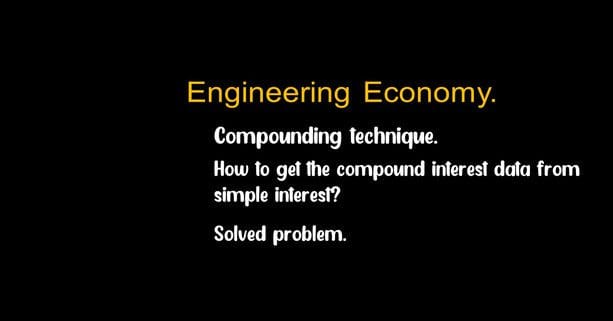Last Updated on July 6, 2025 by Maged kamel
- Approach to compounding technique.
- A solved example is given as an illustration of the process.
- How to get the value of Fv1?
- How can the value of Fv2 be obtained for the compound interest of 6%?
- How can the value of Fv3 be calculated for the compound interest of 6%?
- Plotting the future values of the solved example.
- How can you get a future value of $1 after one year with interest =100%?
Approach to compounding technique.
Compounding technique: If the interest is compounded, the interest earned at the end of the year is added to the principal and continues until the end of time. Future values are calculated using this compounding interest.
As interest rates increase, compounding interest also increases, which means if you want a large sum of money, interest rates must be high. This is achieved by compounding in shorter periods.
We will start to discuss the compounding technique by converting the simple interest to compound interest after one year and then changing the period of compounding to include fewer times than a year. If we have a linear function represented by a line with equation y=mx+c, where m is the slope and c is the intersecting height with the Y-axis, the slope is constant.
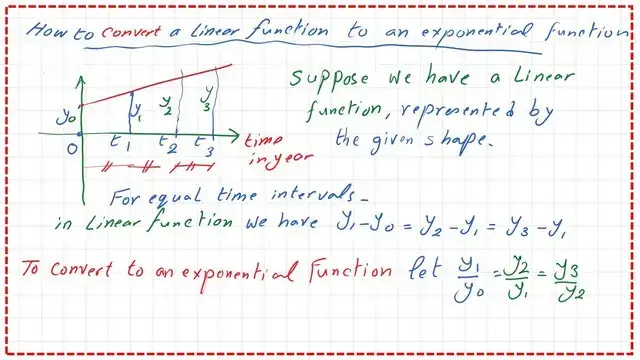
The difference between ordinates is equal to (i*P0*n), where n=1.
Assume that the value of the function at time t1=y1, and at time t2=y2 and at time t3=y3.
The difference between these ordinates is constant which means that y1-y0=y2-y1=y3-y2. To convert that linear function to an exponential function, we will make y1/y0=y2/y1=y3/y2, our start of making the exponential function will be at time t1. From the linear function that represents the case of simple interest, we get the value of P0 at a time to, and also the value of FV1 at the time t1, the x-axis represents the time in years for both graphs.
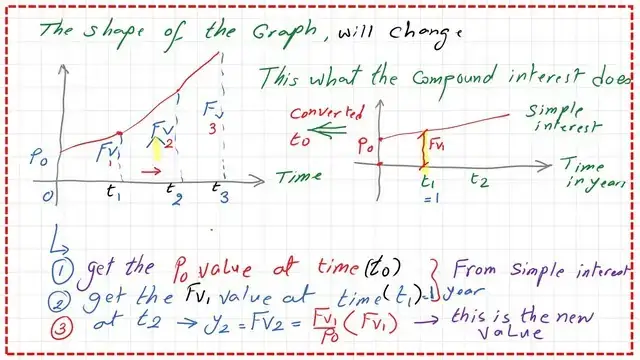
FV1 is the final value at time t1, while P0 is the starting present value at time to. The left-side sketch represents the exponential function form, compound interest of the linear function keeping Fv1/Fv0=Fv2/Fv1=Fv3/Fv2.
A solved example is given as an illustration of the process.
A solved example is given where we have P0, and the present value of an investment deposited in a bank is $1000, at a time to. The interest rate is 6%, which is a simple interest rate for each year.
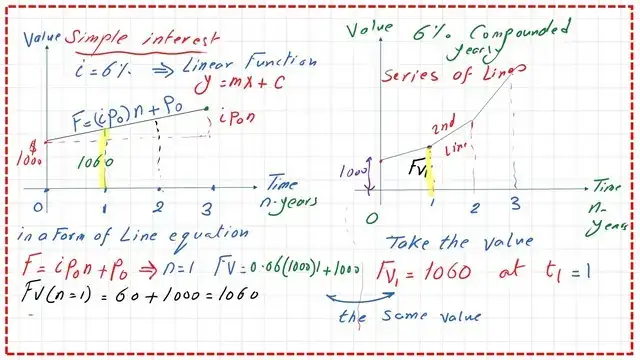
How to get the value of Fv1?
We are interested in getting the value of Fv1 at time t1, where n represents the time in years. The future value FV1 at time t1=P0+i *P0*i*(n)=1000+0.06*(1000*)*(1)=$1060. On the right side is the compounded graph of the same problem, too. P0 is still the present value at time t0, and FV1 at time t1 is the same, with the estimated value of $1060.

How can the value of Fv2 be obtained for the compound interest of 6%?
The future value of the money at time t2 which is FV2 will be different from the one estimated for the simple interest rate. FV2 due to compounding can be estimated by multiplying (FV1/P0)*Fv1. The Po value is $1000.
We have obtained the value of Fv1 as $1060. If we estimate the value of FV2, it will be = (1060/1000)*(1060)=$1123.60. Please refer to the next image for more details.
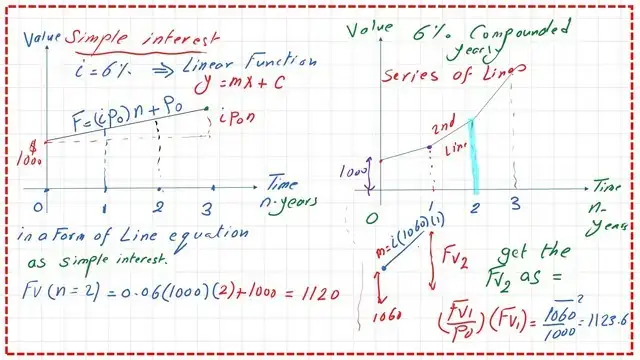
How can the value of Fv3 be calculated for the compound interest of 6%?
The future value of money at time t3, which is FV3, can be estimated by multiplying (FV2/P1*Fv2). If we estimate the value of Fv3, it will be (1123.6) 2/1060=$1191.0.
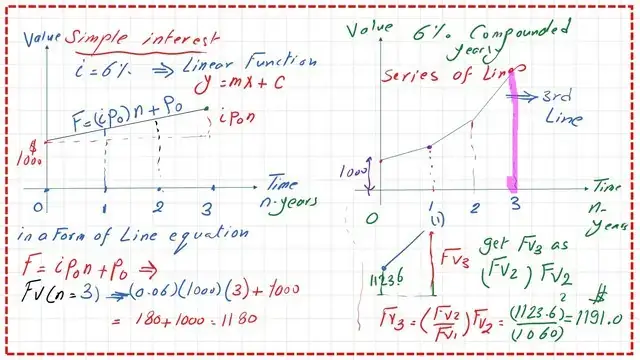
Plotting the future values of the solved example.
The two graphs are drawn together for the invested money at a simple interest of 6% for three years, the above graph shows the investment of $1000, but for a compound interest of 6% compounded yearly.
The difference can be seen in that the slope is increased in the case of compound interest.
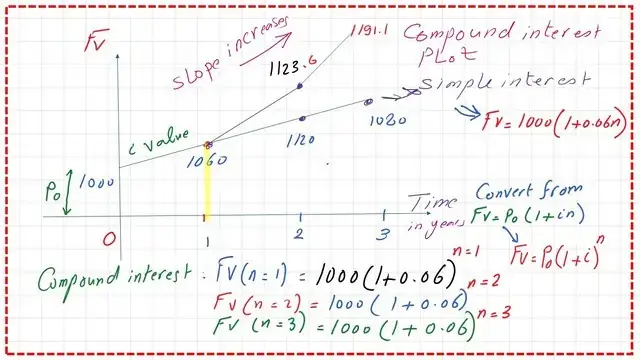
How can you get a future value of $1 after one year with interest =100%?
This is an application for converting from simple interest to compound interest. It is required to get a future value of $1 after one year based on 100% compounded yearly interest.

The future value of the $1 after one year with 100%, as 100% compounded yearly, can be found to be=1$+(100/100)*(1)*(1)=$2.00. The value matches Table 4.13 for the compounded value of $1.
For a useful external resource, Engineering EconomyA good referance.
In the next post, we will derive the expression for the different frequencies of compound interest—the following post 6a– Types of frequencies of compounding.
